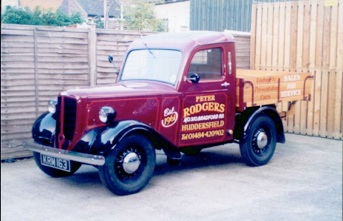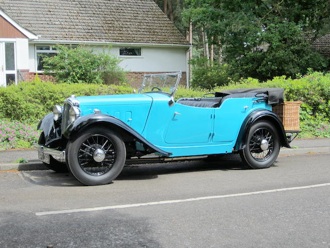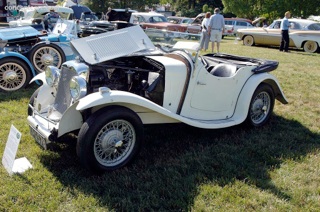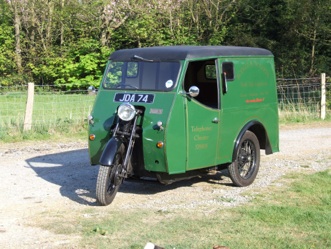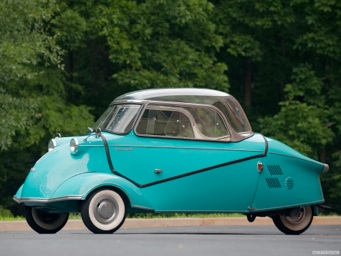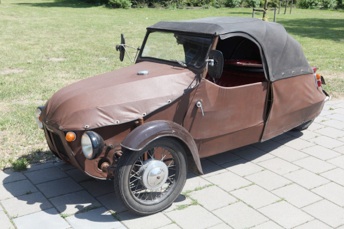In Praise of Modest Classics
In this earlier published piece I take a light-hearted look at the charms of more humble old cars. Sadly, I now no longer own the Bradford or the Girderfolk.
You can have as much fun with a modest old car as you can with an exotic. I'm certain there is as much pleasure to be had from an Austin Seven as from a Maserati Superbitz. In fact there's a strong case to be made for getting more out of owning a work-a-day classic, particularly one of pre ‘50’s ilk, than a high value, performance model. A while ago I acquired a Bradford lorry (more of a pickup really) and I have to admit that to date it has been a wholly enjoyable experience, opening up aspects of historic motoring that I haven't before encountered.
Pottering along at forty miles an hour, which incidentally I had always dreaded, has actually been fun and the slightly mangled adage, "it is better to travel in hope than to arrive", has taken on a new significance. I enrolled for my first London to Brighton Commercial Run some time ago, joined the Historic Vehicle Society, and have driven in some local runs amidst a clutch of diminutive Fords and Hillmans…and ….er...it's been great. Not to mention the £35 bill for a year's insurance.
Many years ago I owned a late forties Flying Standard Eight drop head coupe and always remember it as a particularly delightful package if somewhat reminiscent of Noddy and Big Ears. I used it as everyday transport and the only problems I encountered were with its six-volt electrics in the winter. In a fit of nostalgia the other day I made some enquiries about acquiring a replacement and was told that the drop heads were extremely rare and that only a handful were originally made (I think someone mentioned the name Mulliner but that might not be right) so it seems my chances of renewing acquaintance are extremely limited. It turns out I had been harbouring something special after all.
A pal of mine, well known in Bugatti circles, has two examples of the illustrious marque but is more often to be seen in his Austin Seven. He'd never admit it but I really do believe that he would rather part with his two Type 40s than give up the little Austin that has been in his family for over fifty years.
A car that has always appealed, although I have never owned one, is a Morris Eight tourer. The two-seaters are particularly attractive. Over the last few years, I have done a bit of historic rallying but of late have rather lost my enthusiasm. The thought of roaring around (well, you know what I mean) the French countryside in an eight horsepower drop top has however, rather rekindled the flame. If I can't find a nice Morris then something else of that ilk would do nicely. Another pal, who operates a taxi business and so spends a lot of time at the wheel, has a distinct preference for what I might term (without giving offence) more mundane historics. He recently came around in a glorious, mid-thirties Minx that was nothing short of delightful. Later the same week he popped by in a 1934 Austin Ten tourer (with a body by an obscure Midlands builder) that was another little gem.
During my continental rally exploits, I learned that one of the advantages of inexpensive and simple cars is the way they lend themselves to being fixed by the roadside. While Astons, Bentleys and Lagondas were being ignominiously whisked home on the back of lorries, little Austins, Morrises and Triumphs were having their internals refurbished with a spoon and a twig while being expertly reassembled in hotel bedrooms. Here's an entry level test for would be mechanics……which is quicker; changing a head gasket on a twin-cam Aston or a Ford Eight? Make that in failing light, in 40 degrees, as well as at 40 degrees on a mountain pass. I remember a wonderful couple, both in their sixties, who would bring an Austin, I think it was a Newbury, along on continental rallies. Nothing short of a crusher could ever stop that indomitable car. I've seen the owner, at ungodly hours, lugging huge lumps of stuff from its innards but it was always there at the start next morning.
As a sort of antidote to horsepower I have rather taken to the notion of building up a collection of oddballs: cars conceived as bargain transport for the lowly and impecunious road user. In fact, my Bradford lorry makes an excellent start. To steal a line from my book (a blatant plug for Petrolhead) "The Bradford was essentially a product of its time; 'minimalist' sums it up quite nicely. It had most of the bits required to make it go and stop but only just enough of each for it to happen." Built in 1950 it uses a seven horsepower, two-cylinder, boxer engine of pre-twenties design, three speed gears, rod brakes, one windscreen wiper and absolutely no creature comforts. Adjustable seats? What nonsense - you sit, bolted to the floor, where they tell you!
I also own a Reliant Girder Fork van. A half car, half motorcycle hybrid; a sort of automotive Frankenstein, escaped onto the roads of post war Britain from the laboratories of the Tamworth firm that was later to provide the Trotters with their transport and the rest of us with a good laugh.
I'd like a Bond Minicar, ideally a twin cylinder, 250cc model but I'd settle for the Villiers 175cc single. The firm eschewed the use of sophisticated devices like starter motors and provided instead ….a piece of string, à la your household lawn mower. The nicest feature was the provision of an electric switch instead of reverse gear. The procedure was simple; switch off the engine, throw the reverse switch, restart the engine, which now ran backwards and, voilà - reverse; in three speeds incidentally.
Who can fail to be entranced by the KR 200 Kabinenroller with its three wheels, perspex top and tandem seating for two. The archetypal "bubble-car", built as a post war replacement for Messerschmitt's earlier and only slightly more lethal ME 109.
I also have to admit always being tempted by adverts for Velorexes with their canvas bodies and East European credentials.
Please don't get me wrong, I'm not making fun of these oddities, just the opposite. It's their very quirkiness that makes them so interesting and such fun to own. While there can be great wonder and even awe in contemplating the mechanical complexities of sophisticated machinery, there is nothing but joy and delight in seeing the simple and rudimentary carrying out the same tasks.
If I knew then what I know now I might have cherished, more than I did, some of the everyday transport that I, and certainly my family, owned when I was a boy. Cars like father's Lloyd van, his front wheel drive BSA Scout and his tiny Triumph saloon with no brakes and only one headlamp would today, provide hours of enjoyable old car motoring.
Remember, you can acquire a delightful old pre-war saloon for less than the price of a cam belt and oil change on an Italian horse-car so why not augment the ownership of your upmarket classic by getting out there and experiencing the world of more humble motors like grandpa used to.



